Past blogs:
Reworked blog Post
How can you ensure equitable access to authentic, meaningful & relevant learning environments for all learners in K-12 open and distributed learning contexts? What did you already know, what do you know now based on the course readings and activities, what do you hope to learn?
The environment is integral for cultivating an equitable learning experience that allows for meaningful and relevant learning to occur. Whether it is in a distributed or open learning environment there are techniques like the Universal Design For Learning (UDL), ways to accommodate and promote learning in the Indigenous communities, and considerations for online learning to cultivate an equitable and impactful online experience.
UDL was developed by Cast 20 years ago and is a guide that helps educators be flexible in their presentation of information, how students demonstrate knowledge and are engaged as well as, break the stigma and barriers in accomodations to help students with disabilites and ELL learners (Basham et al., 2018, p.477-478). Through three principles of “Multiple means of engagement, multiple means of action and expression, and multiple means of representation” educators create an environment that allows any student to thrive with “variability being the norm rather than the exception” (Basham et al., 2018, p.480).
The UDL website has a chart that outlines the nine subsequent guidelines with examples to help guide teachers. UDL can be implemented in a face-to-face or an online environment as online can offer opprotunities to implemnent UDL, such as individualized education (Basham et al., 2018, p.477).
Some online or open learning tools go hand in hand with UDL. In “both blended and full-time virtual settings” it was found that UDL based practice “improved both learner satisfaction and learning outcomes” (Basham et al. 2018, p.489). There has been research on parts of UDL, but more must be done to prove its entirety.
In an article by Kral & Schwab (2012), the eight principles to create an effective learning space for Indigenous learners of every age are explored (p.58):
- Space young people can control
- A space for hangout out and mucking around
- Space where learners learn
- A space to grow into new roles and responsibilities
- A space to practice oral and written language
- A Space to express self and cultural identity through multimodal forms
- A space to develop and engage in enterprise
- A space to engage with the world.
Overall it expressed the need for open learning resources, safe spaces to learn like libraries or cultural centres, providing autonomy over learning, providing schedules ahead of time, guiding enterprise experiences, and bridging the gap between elders and the young through technology, and the arts, to maintain cultural identity, all while stepping into an often unwelcoming world. By acknowledging and implementing these ideas in an online and, especially, open learning environment, educators will better engage, support, and educate Indigenous communities.
Finally, Selwyn (2020) explains how in the Covid-19 world educators have to consider data privacy, nurture greater online relationships, cultivate different online setting for different learners, be flexible and asynchronous, have heightened empathy for students, and recognize how taxing online learning is and that it is a new learning experience for students too.
Sketch note answering question raised by Heather: Extra blog resource
I further hope to understand how to make sure student engagement is still high in a more asynchronous learning style?
Below is a Padlet explaining further connections.
Optional Activities Summaries:
Week 1 (Webinar)
Attached is a mind map outlining notes from the webinar, connections to sources and learning outcomes, as well as an audio file describing the connections. I chose to do the webinar because I wanted to connect to my classmates, hear more about human centred learning and privacy in online learning.
Webinar mind map
Week 2 (Padlet)
Attached is a Screencastify video explaining my experience with Padlet and how I connected it to the course. I chose to do Padlet because I liked the open learning nature of it and the ability to ask peers, instructors and outside educators questions. It felt like a true open education experience.
Week 3 (Slack Conversation)
Attached is a sketch note and Screencasitfy outlining my experience with Slack. I chose the Slack conversation because I liked the closed forum idea; it was like twitter but only conversing with peers. Having the ability to share ideas, connect with classmates and explore were just a few of the reasons I chose to explore Slack.
Slack sketch note
Week 4 (Twitter Chat)
Attached is a fictional podcast where I talk about Twitter and my experience. I chose to do the Twitter chat because I wanted to see what Twitter was like, how a hosted conversation worked and how other outside sources/people could be part of the thread
Sources for new blog post
Basham, J.D., Blackorby, J., Stahl, S. & Zhang, L. (2018) Universal Design for Learning Because Students are (the) Variable. In R. Ferdig & K. Kennedy (Eds.), Handbook of research on K-12 online and blended learning (pp. 477-507). Pittsburgh, PA: Carnegie Mellon University ETC Press.
CAST (2018). Universal Design for Learning Guidelines version 2.2. Retrieved from http://udlguidelines.cast.org
First Nations Education Steering Committee (FNESC). (n.d.). Retrieved July 20, 2020, from http://www.fnesc.ca/
Kral, I. & Schwab, R.G. (2012). Chapter 4: Design Principles for Indigenous Learning Spaces. Safe Learning Spaces. Youth, Literacy and New Media in Remote Indigenous Australia. ANU Press. http://doi.org/10.22459/LS.08.2012 Retrieved from: http://press-files.anu.edu.au/downloads/press/p197731/pdf/ch041.pdf
Selwyn. N. (2020). Online learning: Rethinking teachers’ ‘digital competence’ in light of COVID-19.[Weblog]. Retrieved from: https://lens.monash.edu/@education/2020/04/30/1380217/online-learning-rethinking-teachers-digital-competence-in-light-of-covid-19
Regan, P., & Jesse, J. (2019). Ethical challenges of edtech, big data and personalized learning: Twenty-first century student sorting and tracking. Ethics and Information Technology, 21(3), 167-179. DOI: 10.1007/s10676-018-9492-2
Sources
Barbour, M & Labonte, R. (2018) An Overview of eLearning Organizations and Practices in Canada. In R. Ferdig & K. Kennedy (Eds.), Handbook of research on K-12 online and blended learning (pp. 600-616). Pittsburgh, PA: Carnegie Mellon University ETC Press.
Brendtro, L., Freado, M., James, A., & Admin. (n.d.). Reclaiming Youth at Risk. Retrieved July 28, 2020, from https://reclaimingyouthatrisk.org/
First Nations Education Steering Committee (FNESC). (n.d.). Retrieved July 20, 2020, from http://www.fnesc.ca/
Garrett Dickers, A. (2018) Social Interaction in K-12 Online Learning. In R. Ferdig & K. Kennedy (Eds.), Handbook of research on K-12 online and blended learning (pp. 509-522 ). Pittsburgh, PA: Carnegie Mellon University ETC Press.
Healthbleep.com.(2012, February 10). 1 15 The 3 As of motivation Alan McLean Learning and teaching
. YouTube. https://www.youtube.com/watch?v=hm66HF5Vz5I
Mularella. (2014, September 27). Using Padelt as a Formative Assessment Tool [Web log post]. Retrieved July 25, 2020, from https://spsedtech.wordpress.com/2014/09/27/padlet/#:~:text=Padlet%20(formerly%20known%20as%20Wallwisher,%2C%20photos%2C%20and%20even%20video!
Norman, S. (2018, March 12). 15 Ways To Use Twitter In Education (For Students And Teachers Alike). Retrieved July 27, 2020, from https://elearningindustry.com/15-ways-twitter-in-education-students-teachers
Principles of the Circle of Courage–Source: Used with permission. From Reclaiming Youth at Risk: Our Hope for the Future by Larry Brendtro, Martin Brokenleg, and Steve Van Bockern (pgs. 137-138). Copyright 1990 and 2002 by Solution Tree (formerly National Educational Service), 304 West Kirkwood Avenue, Bloomington, IN 47404, 800-733-6786, www.solution-tree.com.
Regan, P., & Jesse, J. (2019). Ethical challenges of edtech, big data and personalized learning: Twenty-first century student sorting and tracking. Ethics and Information Technology, 21(3), 167-179. DOI: 10.1007/s10676-018-9492-2
Roberts, V. , Blomgren, C. Ishmael, K. & Graham, L. (2018) Open Educational Practices in K-12 Online and Blended Learning Environments. In R. Ferdig & K.Kennedy (Eds.), Handbook of research on K-12 online and blended learning (pp. 527–544). Pittsburgh, PA: Carnegie Mellon University ETC Press.


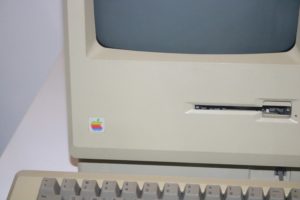

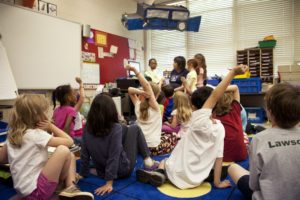 When I can have a connection with a teacher, feel comfortable asking questions, and feel understood and heard I am much more willing to take risks in my learning and to reach out for help. Having a teacher that is intimately involved with the learning that takes place transforms a learning experience, especially in an online setting. Providing opportunities for “connection to others in a learning space can contribute to satisfaction, enjoyment, and greater learning” (Garret Dikkers, 2018, p. 512). Collaborative experience help to stimulate learner-learner interactions and learner-instructor interactions, which help to create a sense of community when online.
When I can have a connection with a teacher, feel comfortable asking questions, and feel understood and heard I am much more willing to take risks in my learning and to reach out for help. Having a teacher that is intimately involved with the learning that takes place transforms a learning experience, especially in an online setting. Providing opportunities for “connection to others in a learning space can contribute to satisfaction, enjoyment, and greater learning” (Garret Dikkers, 2018, p. 512). Collaborative experience help to stimulate learner-learner interactions and learner-instructor interactions, which help to create a sense of community when online. By creating discussion boards, web conferences, encouraging social networking, and providing curated, purposeful lessons, educators help to build relationships in an online setting (Garret Dikker, 2018, p. 515). It is important to note, in all of these examples, the “importance of mitigating risk, psychological safely, appropriate teacher-student interaction and protection of privacy” should always be considered (Garret Dikker, 2018, p. 516).
By creating discussion boards, web conferences, encouraging social networking, and providing curated, purposeful lessons, educators help to build relationships in an online setting (Garret Dikker, 2018, p. 515). It is important to note, in all of these examples, the “importance of mitigating risk, psychological safely, appropriate teacher-student interaction and protection of privacy” should always be considered (Garret Dikker, 2018, p. 516). 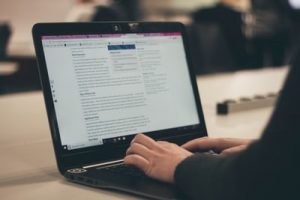 My one outstanding question is, how can these ideas be adapted to younger students who are too young to be on social networks and require more hands-on help and guidance when using online tools?
My one outstanding question is, how can these ideas be adapted to younger students who are too young to be on social networks and require more hands-on help and guidance when using online tools?  collaboration, critical thinking, and discussion” through Project-Based Learning (PjBL) and an emphasis on global-citizenship (PenPal Schools, 2020). It is used by schools in over 150 countries and allows students (8 and older) to engage with other learners in “thoughtfully designed, collaborative projects” (Wilson, 2018). These projects are offered in many of the core subjects along with others such as Environmentalism, Social Justice, and Current Events (PenPal Schools, 2020). They involve “self-guided, differentiated and mixed media” lessons based on a chosen topic (Wilson, 2018). In the lessons, learners read and analyze texts, watch videos, share ideas in a forum space, and collaborate all while “[building] empathy, curiosity, and respect” (PenPal Schools, 2020). The team at PenPal Schools curates each lesson to align with different international educational standards in the areas of “reading, writing, digital citizenship, and social-emotional skills” (PenPal Schools, 2020). Teachers sign up for PenPal Schools and receive their first topic for free (more topics can be obtained through referrals, fees, or scholarships) (PenPal Schools, 2020). In regards to safety, students can only join through a teacher invitation and the only personal information required is the student’s first names, last initials, and country. Every post is moderated and student safety is the application’s number one concern. Click
collaboration, critical thinking, and discussion” through Project-Based Learning (PjBL) and an emphasis on global-citizenship (PenPal Schools, 2020). It is used by schools in over 150 countries and allows students (8 and older) to engage with other learners in “thoughtfully designed, collaborative projects” (Wilson, 2018). These projects are offered in many of the core subjects along with others such as Environmentalism, Social Justice, and Current Events (PenPal Schools, 2020). They involve “self-guided, differentiated and mixed media” lessons based on a chosen topic (Wilson, 2018). In the lessons, learners read and analyze texts, watch videos, share ideas in a forum space, and collaborate all while “[building] empathy, curiosity, and respect” (PenPal Schools, 2020). The team at PenPal Schools curates each lesson to align with different international educational standards in the areas of “reading, writing, digital citizenship, and social-emotional skills” (PenPal Schools, 2020). Teachers sign up for PenPal Schools and receive their first topic for free (more topics can be obtained through referrals, fees, or scholarships) (PenPal Schools, 2020). In regards to safety, students can only join through a teacher invitation and the only personal information required is the student’s first names, last initials, and country. Every post is moderated and student safety is the application’s number one concern. Click 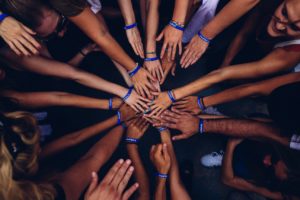 ibilities to learn from other viewpoints” by understanding that while another person’s viewsmay differ from one’s own, those views are still legitimate and worthy (2006, p.496). PenPal Schools offers an opportunity to listen and share with friends across the globe and develop those conversations into collaborative projects involving both students’ new learning and their pre-existing viewpoints. A teacher, Jillian W., supports this by stating that “students [connect] globallyon PenPal Schools to collaborate and learn together” (Common Sense Education, 2019).
ibilities to learn from other viewpoints” by understanding that while another person’s viewsmay differ from one’s own, those views are still legitimate and worthy (2006, p.496). PenPal Schools offers an opportunity to listen and share with friends across the globe and develop those conversations into collaborative projects involving both students’ new learning and their pre-existing viewpoints. A teacher, Jillian W., supports this by stating that “students [connect] globallyon PenPal Schools to collaborate and learn together” (Common Sense Education, 2019).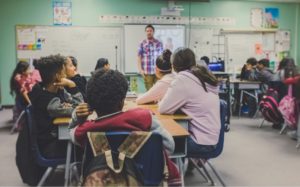 Tying digital multimedia tools into PjBL allows students to “comfortably engage with the process of designing and developing their project” and being able to easily share and documenttheir creations in “a digital format” (Kokotsaki et al., 2016, p.272). For elementary ages, PjBL improves “experiential reasoning and comprehension of relations,” content knowledge and group work skills, motivation, positivity in the classroom, and literacy (Kokotsaki et al., 2016, p.269-270). PenPal Schools is an effective tool for the implementation of PjBL into any classroom.
Tying digital multimedia tools into PjBL allows students to “comfortably engage with the process of designing and developing their project” and being able to easily share and documenttheir creations in “a digital format” (Kokotsaki et al., 2016, p.272). For elementary ages, PjBL improves “experiential reasoning and comprehension of relations,” content knowledge and group work skills, motivation, positivity in the classroom, and literacy (Kokotsaki et al., 2016, p.269-270). PenPal Schools is an effective tool for the implementation of PjBL into any classroom. Learning about different countries around the world allows students to gain a better understanding of humanity and appreciate the similarities and differences between one another. The goal of globalized education, and PenPal Schools, is to form “a greater understanding of interconnectedness between self and world, skills and values” (Katzarska-Miller & Reysen, 2019, p.31). By connecting with other cultures, students can learn to empathize with others and work towards “sustainable development and peaceful societies” (Schweisfurth, 2006, p.42). PenPal Schools makes it easy for teachers to integrate global awareness into their classrooms by increasing their “global content,” “[supporting] the idea of student-perceived awareness,” and “[encouraging] student connections” (Katzarska-Miller & Reysen, 2019, p.28). While global citizenship may not be a concrete part of the BC Curriculum, teachers must integrate PenPal Schools or other similar multimedia technologies to work towards a more inclusive world.
Learning about different countries around the world allows students to gain a better understanding of humanity and appreciate the similarities and differences between one another. The goal of globalized education, and PenPal Schools, is to form “a greater understanding of interconnectedness between self and world, skills and values” (Katzarska-Miller & Reysen, 2019, p.31). By connecting with other cultures, students can learn to empathize with others and work towards “sustainable development and peaceful societies” (Schweisfurth, 2006, p.42). PenPal Schools makes it easy for teachers to integrate global awareness into their classrooms by increasing their “global content,” “[supporting] the idea of student-perceived awareness,” and “[encouraging] student connections” (Katzarska-Miller & Reysen, 2019, p.28). While global citizenship may not be a concrete part of the BC Curriculum, teachers must integrate PenPal Schools or other similar multimedia technologies to work towards a more inclusive world.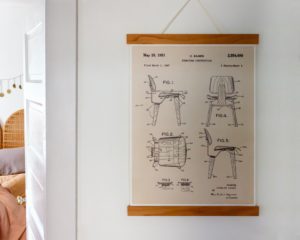


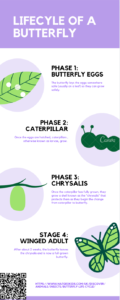 objectives require different visual formats. Initially, the purpose of static illustrations is examined and it is found that “adding static diagrams or illustrations to a verbal (text or audio) presentation frequently facilitates a deeper understanding of the to-be-learned material” (Butcher, p.181). An article by Kari Jabbour (2012) supports this claim by investigating the types of graphics that foster deeper levels of learning. For example, decorative graphics are often “used to inspire instructional display by adding artistic appeal or humor, but [have] no real instructional target” (Kari Jabbour, p.13). When incorporating graphics in a lesson, it is critical to eliminate unnecessary information and have an equal balance of text and visuals.
objectives require different visual formats. Initially, the purpose of static illustrations is examined and it is found that “adding static diagrams or illustrations to a verbal (text or audio) presentation frequently facilitates a deeper understanding of the to-be-learned material” (Butcher, p.181). An article by Kari Jabbour (2012) supports this claim by investigating the types of graphics that foster deeper levels of learning. For example, decorative graphics are often “used to inspire instructional display by adding artistic appeal or humor, but [have] no real instructional target” (Kari Jabbour, p.13). When incorporating graphics in a lesson, it is critical to eliminate unnecessary information and have an equal balance of text and visuals.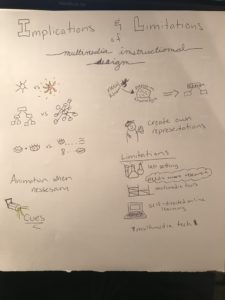 Instructional Designand the importance of understanding your unique learners. Shah & Khan (2015) support this idea by stating “multimedia [tools] provide a variety of learning styles at the same time to cater to the requirements of different students” (p.350). Butcher summarizes the findings of multimedia visual and auditory stimuli options through the following benefits: simplifying visuals using well organized semantic models, integrating verbal and visual information both abstractly and concretely; using necessary animations/cues/spotlights, considering existing knowledge for connection making, and allowing students to create their own representations when possible (Butcher, p.194-195). Upon reflection on these findings, the implementation of multimedia in the classroom appears to be a viable option for student success. Through the use of multimedia tools, “learners become active participants in the teaching and learningprocess instead of being passive learners” (Shah & Khan, p.356).
Instructional Designand the importance of understanding your unique learners. Shah & Khan (2015) support this idea by stating “multimedia [tools] provide a variety of learning styles at the same time to cater to the requirements of different students” (p.350). Butcher summarizes the findings of multimedia visual and auditory stimuli options through the following benefits: simplifying visuals using well organized semantic models, integrating verbal and visual information both abstractly and concretely; using necessary animations/cues/spotlights, considering existing knowledge for connection making, and allowing students to create their own representations when possible (Butcher, p.194-195). Upon reflection on these findings, the implementation of multimedia in the classroom appears to be a viable option for student success. Through the use of multimedia tools, “learners become active participants in the teaching and learningprocess instead of being passive learners” (Shah & Khan, p.356).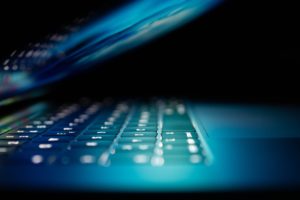
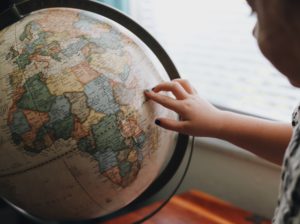 ulturally-sensitive, aware, and understanding.
ulturally-sensitive, aware, and understanding. the learning outcomes, the breakdown of the lesson, and the guide for educators to follow. One of the best parts is for each lesson you, as the educator, can choose between the lesson plan for in class or at home. Lessons can be sent home and done between guardians and children. These lessons can be lengthy so asking the Guardian to do it can be a big ask. As the lessons are clearly laid out it is easy to pick and choose which lessons or units one would want to implement in the classroom at all. It is quite a lengthy curriculum, and getting through the whole thing in one school year could potentially be hard.
the learning outcomes, the breakdown of the lesson, and the guide for educators to follow. One of the best parts is for each lesson you, as the educator, can choose between the lesson plan for in class or at home. Lessons can be sent home and done between guardians and children. These lessons can be lengthy so asking the Guardian to do it can be a big ask. As the lessons are clearly laid out it is easy to pick and choose which lessons or units one would want to implement in the classroom at all. It is quite a lengthy curriculum, and getting through the whole thing in one school year could potentially be hard. says what it is. Additionally, one can hover the mouse over the picture, and it will say the emotion that is displayed. One can then click on a question mark near the face to learn more about the emotion as well. This is a great example of the multimedia principle as words and pictures are better than just words alone (Mayer, p. 8, 2016). It also supports the spatial contiguity principle as the word that is associated is right next to the picture (Mayer, p. 8, 2016). Before assessing emotions it prompts one to close their eyes and breath in and out five times. This is a great tool for helping students center themselves and tap into what they are feeling. myPeakaville engages learners in technology with the specific purpose of teaching students important lessons in SEL. Sensory modalities are used throughout the myPeakaville site as there is narration throughout, along with text and pictures (Mayer, p.8, 2016). It supports the segmenting principle as is a learner paced experience. Students can work through the led experiences at their own pace and learn through the process (Mayer, p. 8, 2016). The myPeakaville site is an example of the guided discovery principle. Students are led through activities that teach, test, and guide students through the self-discovery of emotions and the emotions of others- guided discovery principle (Mayer, p. 9, 2016).
says what it is. Additionally, one can hover the mouse over the picture, and it will say the emotion that is displayed. One can then click on a question mark near the face to learn more about the emotion as well. This is a great example of the multimedia principle as words and pictures are better than just words alone (Mayer, p. 8, 2016). It also supports the spatial contiguity principle as the word that is associated is right next to the picture (Mayer, p. 8, 2016). Before assessing emotions it prompts one to close their eyes and breath in and out five times. This is a great tool for helping students center themselves and tap into what they are feeling. myPeakaville engages learners in technology with the specific purpose of teaching students important lessons in SEL. Sensory modalities are used throughout the myPeakaville site as there is narration throughout, along with text and pictures (Mayer, p.8, 2016). It supports the segmenting principle as is a learner paced experience. Students can work through the led experiences at their own pace and learn through the process (Mayer, p. 8, 2016). The myPeakaville site is an example of the guided discovery principle. Students are led through activities that teach, test, and guide students through the self-discovery of emotions and the emotions of others- guided discovery principle (Mayer, p. 9, 2016).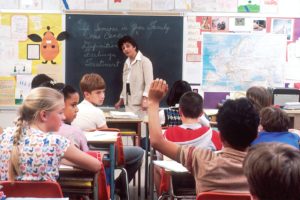 This leads to less autonomy for the students. The lesson plans that are provided begin with a story that immediately sets the tone for multimedia learning. Aj Juliani says in his article “The Importance of Teaching With Stories”, stories fully engage the learner and sync them to the storyteller. By beginning the lesson plans with a letter from Leo the Hedgehog and a story the learners are invested in Leo’s narrative and form a connection with the teacher. Through the text and pictures, the narration that is provided in the audio recording, or narration by the teacher, students are given worked examples of how-to and how not to handle certain situations (Mayer, p. 9, 2016). Each of the lessons builds upon the last, giving a well-rounded experience and understanding, specific for that grade level, in an SEL topic, thus supporting the prior knowledge principle (Mayer, p. 9, 2016).
This leads to less autonomy for the students. The lesson plans that are provided begin with a story that immediately sets the tone for multimedia learning. Aj Juliani says in his article “The Importance of Teaching With Stories”, stories fully engage the learner and sync them to the storyteller. By beginning the lesson plans with a letter from Leo the Hedgehog and a story the learners are invested in Leo’s narrative and form a connection with the teacher. Through the text and pictures, the narration that is provided in the audio recording, or narration by the teacher, students are given worked examples of how-to and how not to handle certain situations (Mayer, p. 9, 2016). Each of the lessons builds upon the last, giving a well-rounded experience and understanding, specific for that grade level, in an SEL topic, thus supporting the prior knowledge principle (Mayer, p. 9, 2016). This web-based site provides opportunities for fun, meaningful and important learning to occur that provide teachers with a jumping-off point for teaching SEL topics that can be hard to approach (Sorden, p. 6, 2012). Beyond teaching students how to be good people it integrates multimedia learning seamlessly and purposefully.
This web-based site provides opportunities for fun, meaningful and important learning to occur that provide teachers with a jumping-off point for teaching SEL topics that can be hard to approach (Sorden, p. 6, 2012). Beyond teaching students how to be good people it integrates multimedia learning seamlessly and purposefully.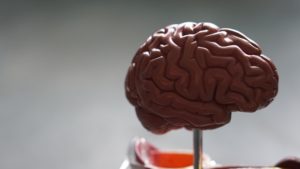 This research, being the basis for multimedia in modern education, shows how education has shifted from the IQ based testing and standardized testing, emphasizing retention of information, to the now more popular lack of testing or inquiry-based learning experiences. The shift in modern education has emphasized students understanding a subject and being able to apply it to new situations and examples or as Mayer put it, the transfer of knowledge. Through his, Mayer’s, innovative research he was able to create principles of multimedia learning that help teachers create and select multimedia learning opportunities that are beneficial, successful
This research, being the basis for multimedia in modern education, shows how education has shifted from the IQ based testing and standardized testing, emphasizing retention of information, to the now more popular lack of testing or inquiry-based learning experiences. The shift in modern education has emphasized students understanding a subject and being able to apply it to new situations and examples or as Mayer put it, the transfer of knowledge. Through his, Mayer’s, innovative research he was able to create principles of multimedia learning that help teachers create and select multimedia learning opportunities that are beneficial, successful , and innovative for their learners. Alexander also explained the extraneous, essential, and generative information aspect. This is one thing that many of my instructors have struggled with in their PowerPoint presentations. Being able to eliminate unnecessary info (extraneous), provide and impart the essential information, and being able to help make connections to previous learning.
, and innovative for their learners. Alexander also explained the extraneous, essential, and generative information aspect. This is one thing that many of my instructors have struggled with in their PowerPoint presentations. Being able to eliminate unnecessary info (extraneous), provide and impart the essential information, and being able to help make connections to previous learning. . Pastore explained how this was distracting. In his video, I found the same thing with the introduction of all the heart pictures, lots of text, him narrating, and being in the frame. It was all a bit much.
. Pastore explained how this was distracting. In his video, I found the same thing with the introduction of all the heart pictures, lots of text, him narrating, and being in the frame. It was all a bit much. I found that for short articles it can work or short videos, or as a way of synthesizing my written notes, but as my primary note-taking technique it does not work. It is a way for me to review my notes and actively make connections and create pictures that can jog my memory on a test or essay. This being said I do think it is a great alternative for some people who may think more creatively. Sketch noting can be beneficial for some to hone in on the important information.
I found that for short articles it can work or short videos, or as a way of synthesizing my written notes, but as my primary note-taking technique it does not work. It is a way for me to review my notes and actively make connections and create pictures that can jog my memory on a test or essay. This being said I do think it is a great alternative for some people who may think more creatively. Sketch noting can be beneficial for some to hone in on the important information.